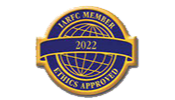2022 Tax Inflation Adjustments
December 08, 2021
On Nov. 10, 2021, the IRS announced inflation adjustments for 2022 affecting standard deductions, tax brackets, and more. The changes (effective when you file in 2023) are the result of higher inflation in 2021. There are also changes to the alternative minimum tax, estate tax exemption, earned income tax credit and flexible spending account limits, among others.
Over the past few years, your tax bill has been affected by many law changes. These changes can be somewhat confusing at times. The best way to be prepared for these changes is to make year-round tax planning your top priority.
Overview
Recently, the IRS announced higher federal income tax brackets for 2022 due to the rise of inflation. The standard deduction is increasing to $25,900 for married couples filing together and $12,950 for single taxpayers. The consumer price index surged by 6.2% in October compared to the previous year, the biggest jump in more than three decades.
Here are a couple ways Agemy Financial Strategies can help you make the necessary adjustments for your tax planning in 2022 and beyond.
Last Chance for Deductions and Credits
Several deductions and credits will expire in 2021. It’s important to take advantage of these credits and deductions now to consider how their elimination could affect your income and corporate tax rate in 2022. The best way to do this is to consult with your tax advisor to see what credits and deductions you qualify for.
The Employee Retention Tax Credit is an incentive that was created within the Coronavirus Relief and CARES Act that was intended to encourage employers to keep employees on the payroll as they navigate the unprecedented effects of COVID-19. With ERTC, companies can get a maximum of $21,000 for keeping workers employed through September 30, 2021. However, if you started your business after February 15, 2020, it’s considered a recovery startup business, and the maximum credit is $50,000. Learn more by reviewing IRS Notice 2021-49.
If you paid qualified sick or family leave related to COVID-19 or vaccinations through September 30, 2021, you may be eligible for a credit due to the Families First Coronavirus Response Act (FFCRA) and American Rescue Plan (ARP). Review the IRS comparison chart to see how rules for time frames in 2021 differ.
As of now, you can deduct expenses paid for with PPP loans. Guidance may change before tax filing time, so it’s very important to track payroll and fees paid with PPP funds or other government grants or loans.
2022 Tax Year: Leverage these deductions before they expire
2022 will be the last year you can take the total deductions for Section 179, bonus depreciation, and qualifying business meals. Although this could change, it’s a good idea to take advantage of these deductions before the January 1, 2023 deadline to acquire and place assets into service.
For 2021, the maximum expense deduction is $1,050,000. This limit is reduced by the amount by which the cost of Section 179 property placed in service during the tax year exceeds $2,620,000. Although the TCJA offers deductions for 50% of qualifying client-related business meals, the Consolidated Appropriations Act (CAA) made an exception for 2021 and 2022.
Further Adjustments
The IRS also made other inflation adjustments, such as changes to the alternative minimum tax, a parallel system for higher earners, and an increased estate tax exemption. Moreover, there’s a boost for the earned income tax credit, a write-off for low- to moderate-income families, and higher flexible spending account limits, among other changes. The key takeaways of these changes include:
- Basic tax rates have not changed for 2022 although income levels (brackets) for each rate have.
- Standard deductions and about 60 other provisions have been adjusted for inflation to avoid bracket creep.
- The maximum Earned Income Tax Credit for 2022 will be $6,935 vs. $6,728 for tax year 2021 for taxpayers with three or more qualifying children.
- Basic exclusion for decedents who die in 2022 will be $12,060,000 vs. $11,700,000 for 2021.
- The annual gift exclusion for calendar year 2022 will be $16,000 vs. $15,000 for 2021.
Workers may also save more to 401(k) plans in 2022, according to last week’s announcement. But there won’t be a higher limit for individual retirement accounts.
Final Thoughts
Lastly, before making any tax and/or business decision, you should always consult a professional who can advise you based on your individual situation. Understanding tax strategies and managing your tax bill should be part of any sound financial approach. Some taxes can be deferred, and others can be managed through tax-efficient investing. With careful and consistent preparation, you may be able to manage the impact of taxes on your financial efforts.
A strong tax planning strategy can save you money on retirement withdrawals, keep your investments efficient, help you give more to charity, maximize your estate, and put more money in your pocket. At Agemy Financial Strategies, our seasoned financial advisors are highly experienced in managing taxes and understand the importance of a well-executed tax plan for financial success. Click here to find forms, explanations, and other tools to help you manage your taxes.
For more information on 2022 tax inflation adjustments and tax advising services, contact us here today.







Leave a Reply
Want to join the discussion?Feel free to contribute!